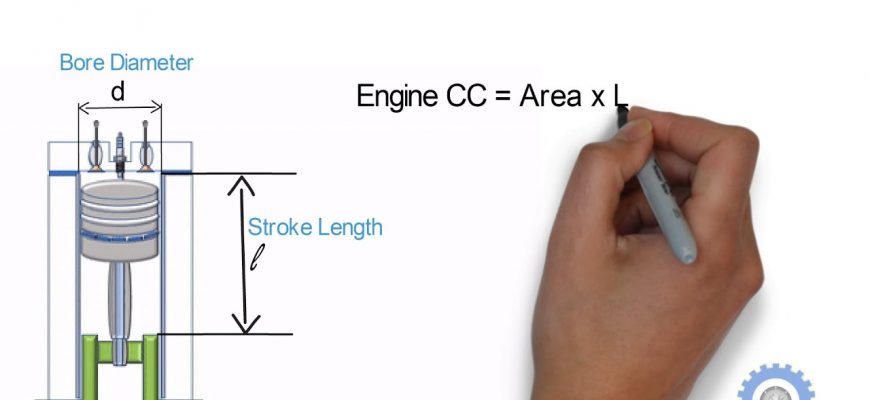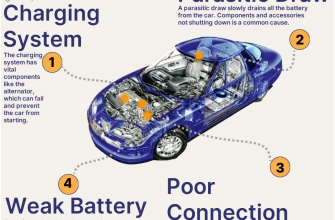When it comes to automotive engineering‚ the term “CC” is a cornerstone of engine performance discussions. But what exactly does it mean‚ and why is it so crucial? In this article‚ we delve into the concept of cubic centimeters (CC) and how it affects engine performance‚ efficiency‚ and overall vehicle dynamics.
- What is CC?
- The Relationship Between CC and Engine Power
- Factors Influencing Engine Performance Beyond CC
- CC and Vehicle Classification
- The Role of CC in Engine Versatility
- Performance Tuning: Maximizing CC Potential
- Environmental Considerations and CC
- Future Trends: CC in the Era of Electrification
- Embracing the Future: CC in Engine Design and Innovation
- Rethinking Performance Metrics
- Hybrid Technology: Bridging the Gap
- Consumer Awareness and Engine Choices
- The Role of Education and Transparency
What is CC?
CC stands for cubic centimeters‚ a unit of measurement that indicates the displacement of an engine’s cylinders. Essentially‚ it’s the volume of space that the engine’s pistons displace when they move up and down within the cylinders. This measurement is significant because it directly correlates to the engine’s ability to produce power.
The Relationship Between CC and Engine Power
In general‚ the larger the CC of an engine‚ the more air and fuel it can intake‚ which translates to higher power output. Here’s how it works:
- Increased Displacement: An engine with a larger CC can accommodate more fuel and air‚ leading to a more potent combustion process.
- Torque and Horsepower: Larger engines typically produce more torque at lower RPMs‚ improving acceleration and overall vehicle responsiveness.
- Engine Efficiency: While larger engines can deliver more power‚ they can also be less fuel-efficient. Understanding the balance between CC and efficiency is crucial for performance tuning.
Factors Influencing Engine Performance Beyond CC
While CC is a critical factor in determining an engine’s power‚ it is not the only one. Other elements play vital roles in performance:
- Engine Design: Factors like the configuration (inline‚ V-type)‚ the number of cylinders‚ and even the materials used can significantly impact performance.
- Forced Induction: Turbochargers and superchargers can enhance the power output of smaller CC engines by forcing more air into the combustion chamber.
- Tuning and Technology: Advanced engine management systems and tuning can optimize fuel delivery and ignition timing‚ maximizing the potential of any engine size.
CC and Vehicle Classification
Understanding CC is essential not only for performance enthusiasts but also for regulatory bodies and consumers. Many countries classify vehicles based on their engine CC‚ impacting insurance rates‚ taxes‚ and even licensing requirements. For instance:
- Small Cars: Often feature engines with lower CC (around 1000cc to 1500cc)‚ focusing on fuel efficiency.
- Mid-Range Vehicles: Typically have engines ranging from 1500cc to 2500cc‚ balancing power and efficiency.
- Performance Vehicles: High-performance cars often exceed 3000cc‚ designed for speed and power‚ prioritizing performance over fuel economy.
Understanding CC is fundamental for anyone interested in engine performance. It serves as a key indicator of potential power output and efficiency‚ while also influencing vehicle classification and regulatory considerations. As technology continues to evolve‚ the relationship between CC‚ power‚ and efficiency will remain a dynamic and fascinating aspect of automotive engineering. Whether you’re a gearhead or just a curious consumer‚ grasping the implications of CC can enhance your understanding of the vehicles we drive.
The Role of CC in Engine Versatility
Understanding CC extends beyond mere power output; it also plays a crucial role in the versatility of an engine. Vehicles with varying CC configurations can cater to different driving needs and preferences. For instance‚ a smaller engine may be perfect for city driving‚ providing nimble handling and excellent fuel economy. In contrast‚ a larger engine is often preferred for off-road adventures or highway cruising‚ where power and torque become paramount.
Performance Tuning: Maximizing CC Potential
For those looking to enhance their vehicle’s performance‚ tuning becomes an indispensable tool. Performance tuning can significantly alter how an engine operates‚ regardless of its CC. Techniques can range from simple modifications‚ such as upgrading the exhaust system‚ to more complex interventions like remapping the engine control unit (ECU). These adjustments can unleash the hidden potential of an engine‚ allowing it to perform beyond its stock capabilities‚ effectively maximizing the benefits of its CC.
Environmental Considerations and CC
As environmental awareness grows‚ the automotive industry is increasingly focused on balancing CC with emissions and fuel efficiency. Smaller engines‚ often turbocharged‚ are becoming popular as they can provide sufficient power while maintaining lower emissions. This shift not only meets regulatory standards but also resonates with consumers seeking eco-friendly options. Understanding how CC interacts with these factors is vital for manufacturers aiming to innovate responsibly.
Future Trends: CC in the Era of Electrification
The rise of electric and hybrid vehicles is shifting the narrative around CC. While traditional combustion engines will always have their enthusiasts‚ the future looks bright for electric powertrains‚ which do not have a CC measurement. However‚ the performance characteristics and torque delivery of electric engines often parallel or even exceed those of their gas-powered counterparts. As the industry evolves‚ the conversation around CC will likely adapt‚ focusing more on torque and efficiency metrics rather than displacement alone.
Embracing the Future: CC in Engine Design and Innovation
The landscape of automotive engineering is undergoing a seismic shift. As manufacturers pivot to more sustainable practices‚ the relevance of traditional CC measurements is being reevaluated. The advent of hybrid and fully electric vehicles challenges the long-held paradigms surrounding engine displacement. In this new era‚ understanding CC is crucial not only for optimizing performance but also for paving the way for innovation in engine technology.
Rethinking Performance Metrics
In a world increasingly focused on emissions and sustainability‚ performance metrics are evolving. With electric motors offering instantaneous torque and high efficiency‚ the conventional CC-based power discussions are becoming less relevant; Instead‚ torque and horsepower curves are taking precedence‚ providing a more nuanced understanding of how an engine performs across various conditions. This shift necessitates a reevaluation of how we assess vehicle performance‚ moving from purely displacement-based metrics to a more holistic view that includes technology and design considerations.
Hybrid Technology: Bridging the Gap
Hybrid vehicles‚ which combine internal combustion engines with electric powertrains‚ illustrate the potential of integrating CC with advanced technology. In these vehicles‚ the traditional engine is often smaller in displacement but enhanced through electric assistance. This synergy allows manufacturers to maintain desirable power outputs while minimizing fuel consumption and emissions. The result is a more efficient vehicle that can perform well in urban environments while still offering the power needed for highway driving.
Consumer Awareness and Engine Choices
As consumers become more informed about vehicle efficiency and performance‚ the importance of understanding CC in relation to overall engine performance grows. Shoppers today are looking not just for power‚ but for a balance of performance‚ fuel efficiency‚ and environmental impact. This trend has prompted manufacturers to market vehicles with smaller CC engines that are turbocharged or equipped with hybrid technology‚ offering consumers a way to enjoy robust performance without compromising on sustainability.
The Role of Education and Transparency
To navigate this evolving landscape‚ education is key; Consumers need clear‚ transparent information about how CC relates to performance and efficiency. This involves not only understanding the basic mechanics of engine displacement but also how advancements in technology can effectively change traditional outcomes. Manufacturers must take the lead in providing this transparency‚ offering insights into how their vehicles achieve performance goals through innovative designs and technologies.
As the automotive industry transitions toward a more sustainable future‚ the conversation around CC will continue to evolve. While cubic centimeters will still play a role in understanding engine displacement‚ the emphasis will increasingly shift towards efficiency‚ power delivery‚ and innovative technologies. Understanding these changes will empower consumers and enthusiasts alike‚ allowing them to make informed choices about their vehicles.










Fantastic read! The relationship between CC and torque was particularly enlightening. Great job explaining complex concepts!
I found this article incredibly insightful, especially the part about tuning and technology in engines. A must-read for car enthusiasts!
This article provides a clear and concise explanation of CC in automotive engineering. I learned a lot about how it impacts engine performance!
The section on forced induction was fascinating! It’s amazing how technology can enhance smaller engines. Well done on this piece!
I loved how the article highlighted other factors influencing engine performance beyond just CC. Very informative and well-written!
I appreciate the detailed breakdown of how CC relates to power output. It really helped me understand engine dynamics better!
Great explanation of cubic centimeters and their importance in automotive engineering. This will definitely help me with my studies!
This article is an excellent resource for anyone interested in cars. The insights on engine efficiency versus size were especially useful!